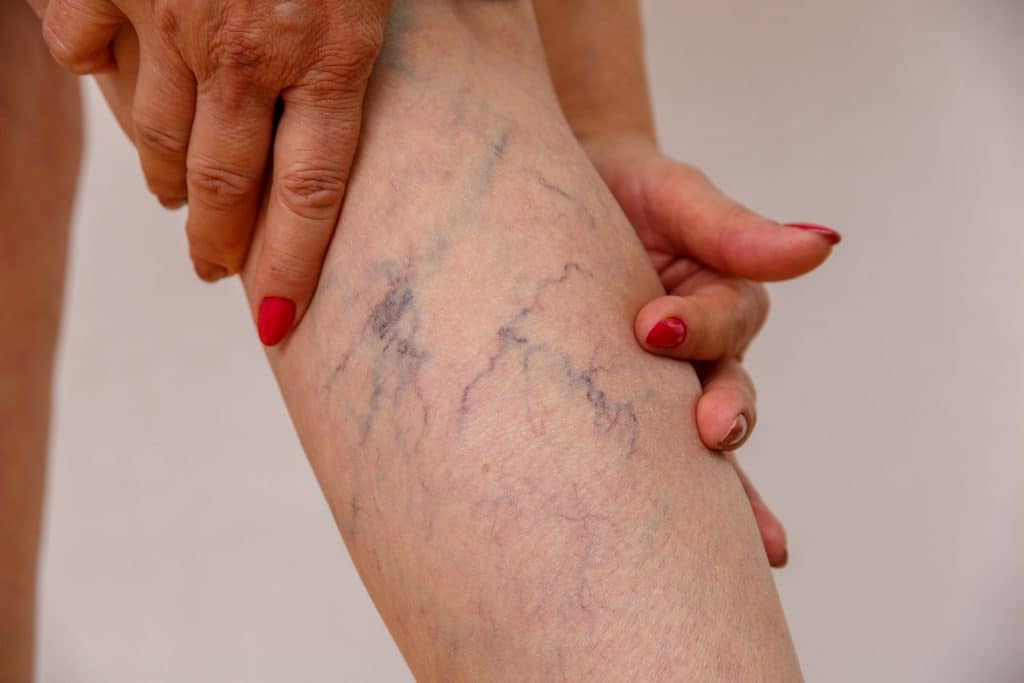Dr. Caroline Novak — vein doctor in Freeport — discusses venous disease.
Dr. Caroline Novak is the best vein doctor in Freeport, Long Island. She’s a double board-certified vein doctor specializing in internal medicine and vein treatments. Over the years, Dr. Novak has built an illustrious career for herself, due in no small part to her friendly and compassionate attitude. Patients fly over from across the country to consult her about spider veins, varicose veins, and venous disease in general. Dr. Novak has treated hundreds of patients with venous disease, all while maintaining a perfect track record.
While Dr. Caroline Novak has presided over several vein clinics across the country, she is currently the medical director at Vein Treatment Clinic, Long Island. VTC is a state-of-the-art vein center in Long Island that supports Dr. Novak in every way possible, equipped with the latest technologies necessary to provide minimally invasive vein treatments. Our vein clinic is extremely close to Freeport — less than 15 minutes via NY-27E and NY-27A, and less than 20 minutes via Southern State Pkwy. As you drive down the southern state highway, you’ll find our vein clinic next to the Southward Ho Country Club — you can’t miss it!
If you have varicose veins and spider veins, we welcome you to schedule an appointment with Dr. Novak immediately. However, if you have any questions, you can also go through this article. Our vein doctor in Freeport has compiled answers to some of the most frequently asked questions related to venous disease.

How does venous disease lead to spider veins and varicose veins?
Venous disease is a circulatory disorder in which your vein valves collapse or malfunction. These vein valves are usually responsible for smooth blood circulation to the heart, acting like one-way doors to ensure blood flows towards the heart and not backward. Chronic venous insufficiency is a condition in which your vein valves collapse, causing blood to flow backward due to the force of gravity.
Over time, as blood accumulates in your leg veins, you suffer from the symptoms of venous disease, including spider veins and varicose veins. The accumulation of blood in your leg veins leads to vein dilation, which makes them appear on the surface of the skin in dense clusters, i.e., as spider veins. However, over time, your leg veins dilate even more, eventually bulging out as varicose veins that look like a dense mass of twisted and knotted ropes.
What are the other symptoms and complications of venous disease?
Even though spider veins and varicose veins are two of the most common and visible complications of venous disease, they’re not the only ones. Venous disease leads to several other symptoms — some benign and others dangerous.
Early warning signs of venous disease include restless legs, frequent leg cramps, leg swelling, leg heaviness, leg pain, and throbbing leg veins. These signs and symptoms get worse with greater blood accumulation in your leg veins. As such, you experience these symptoms most at the end of the day or after long periods of sitting or standing.
Over time, vein disease progresses and leads to further complications. Your varicose veins grow sensitive and prone to bursting, which can lead to profuse bleeding. The lack of blood circulation in your leg veins leads to skin discoloration, and the formation of non-healing wounds called leg ulcers. The accumulated blood in your veins may also clot — a condition called deep vein thrombosis — and eventually get carried to the lungs, leading to pulmonary embolism.
How does a vein center diagnose venous disease?
When you schedule a consultation, the vein center or vein doctor will first diagnose the root cause of spider veins and varicose veins. They will look for signs of venous disease, and then schedule a vascular imaging test.
Duplex Ultrasound is a vascular imaging test that allows the vein doctor to visualize the blood flow in your leg veins. As mentioned previously, vein disease leads to blood flowing backward to accumulate in your leg veins. As such, vascular imaging allows vein doctors to diagnose venous disease and identify the diseased saphenous vein.
What are the best treatment options for venous disease?
If you have venous disease, the vein doctor will have to first treat the underlying diseased vein before removing the surface varicose veins and spider veins. The vein doctor will recommend minimally invasive treatments for venous disease, such as radiofrequency ablation, endovenous laser ablation, and VenaSeal.
During the minimally invasive treatments, the vein doctor will use various methods — thermal energy, laser energy, or medical adhesives — to collapse the diseased saphenous vein. Once the diseased vein is collapsed, the accumulated blood will flow to healthier veins, restoring smooth blood circulation to the heart.
Once the underlying venous disease is treated, the vein doctor can treat the superficial varicose veins and spider veins. The vein doctor will use ambulatory phlebectomy to physically remove superficial varicose veins from the skin. Finally, they will use a procedure called sclerotherapy to seal the spider veins’ walls, turning them into scar tissues that eventually get absorbed by the body and fade away.
Consult a Vein Doctor in Freeport Today
Vein Treatment Clinic is the best vein treatment center in Long Island because of its accessibility and the presence of the best vein doctor in Freeport — Dr. Caroline Novak. For more information, please schedule an appointment with our vein doctor in Freeport, LI, today.